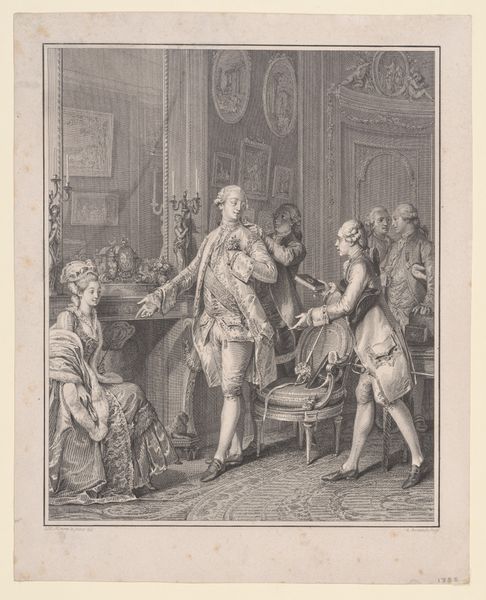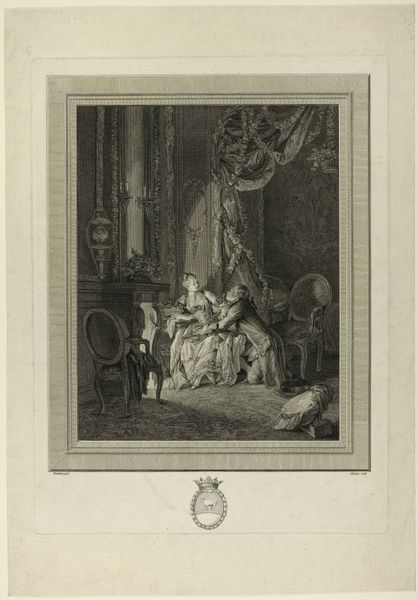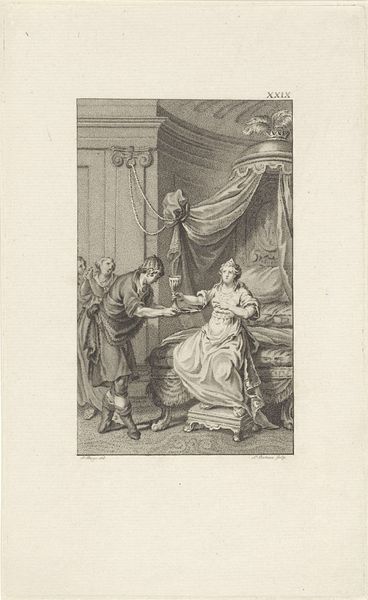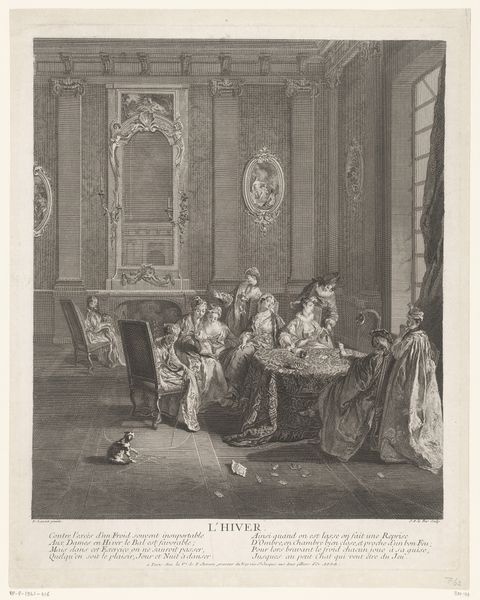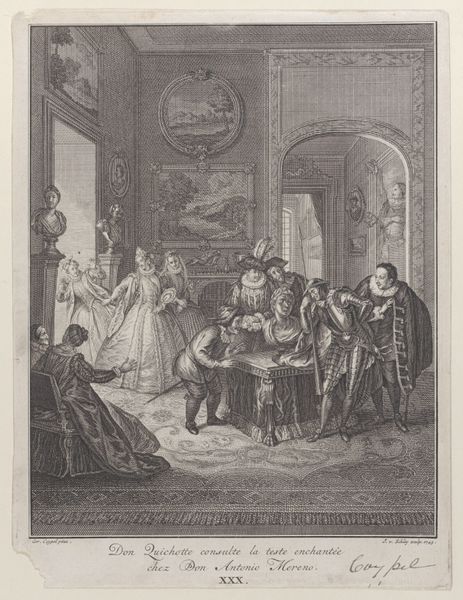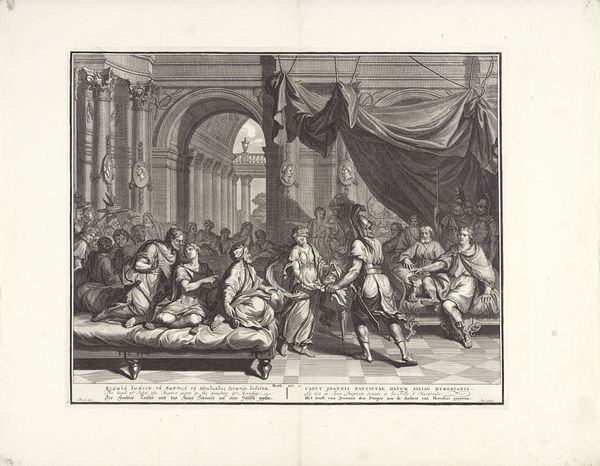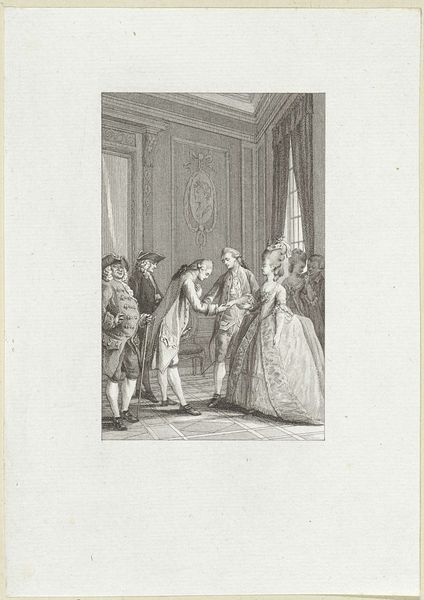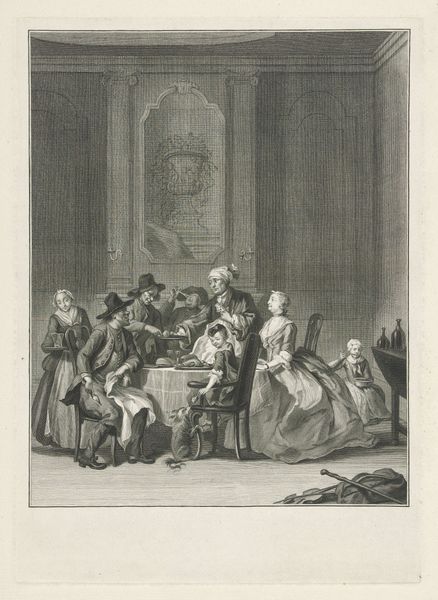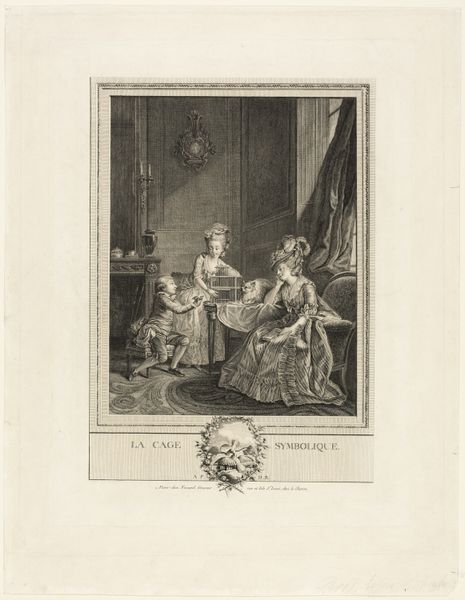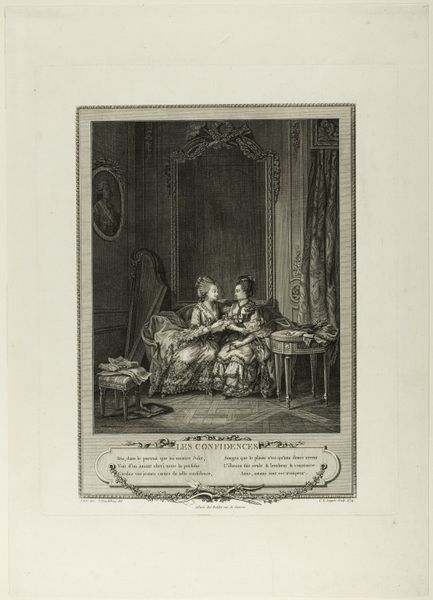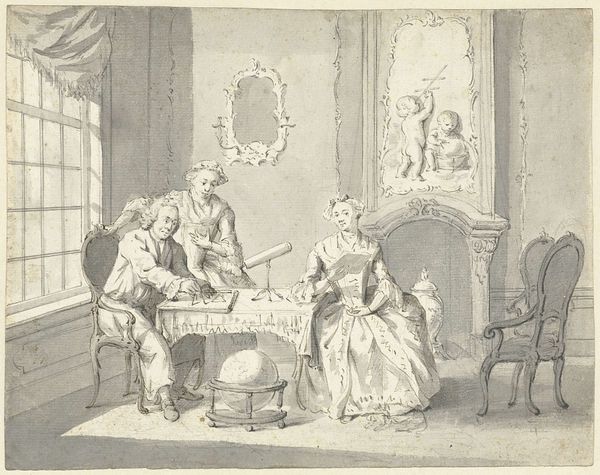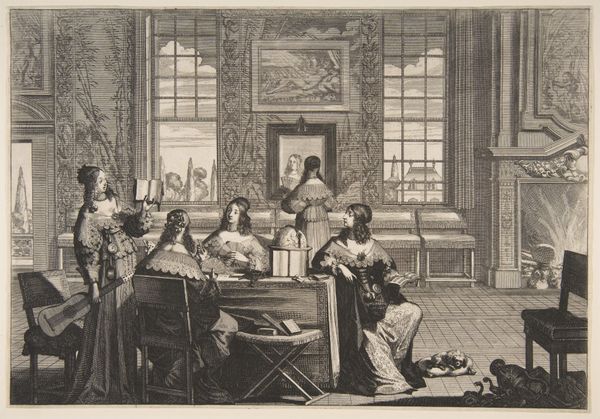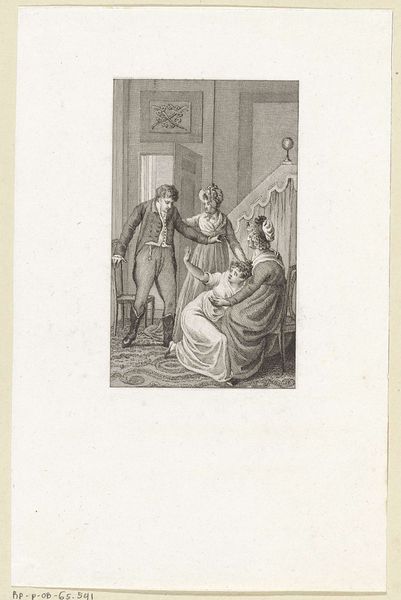
Copyright: Public Domain
Editor: Here we have Nicolas de Launay's "Le Billet Doux," created in 1778. It’s an engraving printed on paper. It depicts a rather theatrical scene. What stands out to you as you consider this work? Curator: I’m drawn to think about the materials used and their social implications. Paper in the 18th century wasn't just a neutral surface; it represented wealth and literacy. Engravings, moreover, were a form of mass production for the elite. How does the choice of printmaking over painting democratize or perhaps re-inscribe existing hierarchies? Editor: That’s a great point about accessibility. It's a detailed image, yet it's reproducible. Do you think the content supports that democratizing potential? Curator: Perhaps. The subject, a romantic encounter, speaks to leisure, to the consumption of both time and printed materials. The labor involved is significant, both the engraver and printer, yet they remain largely invisible within the final "artwork." Consider the social context of these printmakers. Were they challenging or reinforcing existing social norms through their craft? What do you think? Editor: It’s easy to get caught up in the Rococo elegance and miss those labor aspects. So, by looking at the process of how the print was made, and who made it, you see beyond the surface-level narrative? Curator: Exactly. The production becomes the focus. It reveals hidden aspects of class, consumption, and even the artistic intention itself. Editor: This makes me consider how the circulation of images and ideas was being shaped by technology at this moment in history, almost a parallel to our digital age. Curator: Precisely! It's about seeing art not as a singular creation, but as the result of many hands and socio-economic forces.
Comments
No comments
Be the first to comment and join the conversation on the ultimate creative platform.
